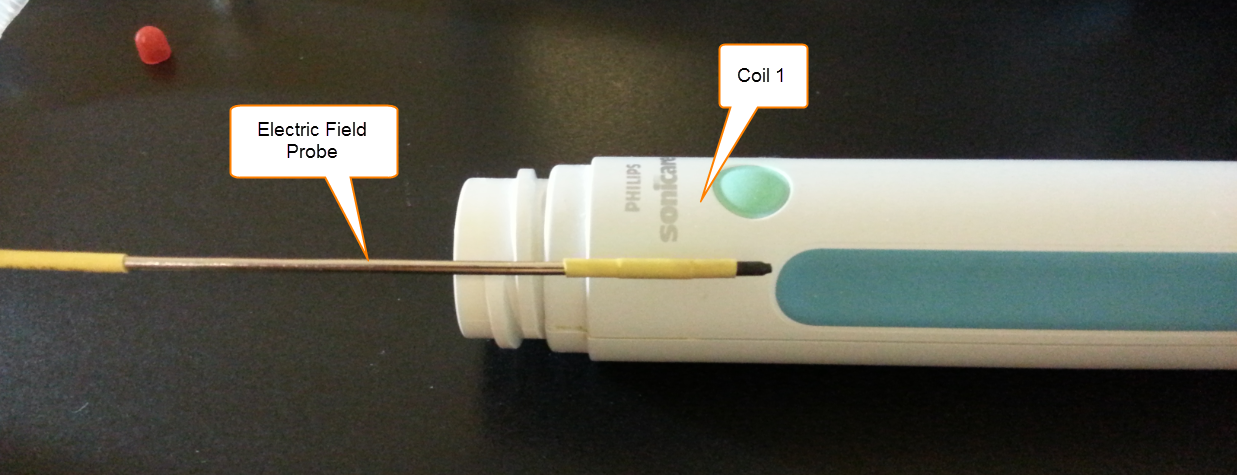Part I: Sonicare Electric Toothbrush Architecture
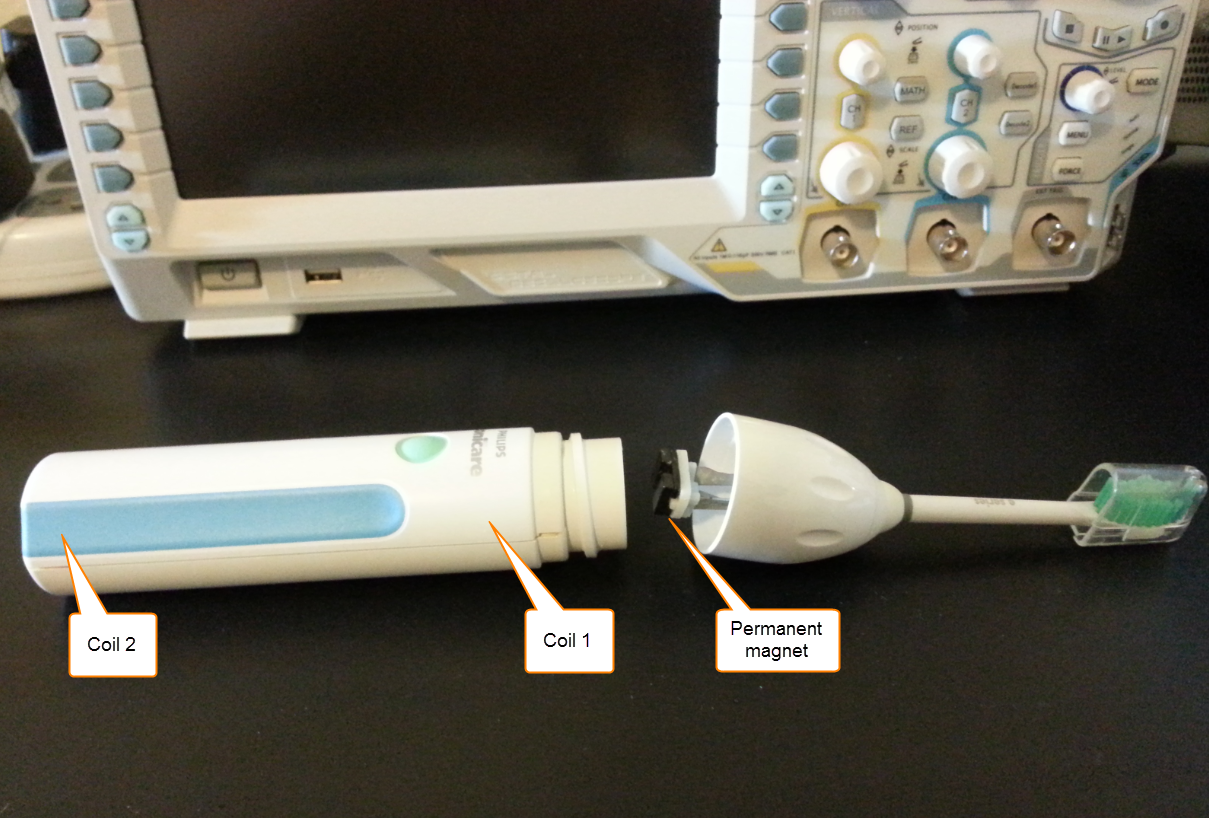
Figure 1: Sonicare Electric Toothbrush Architecture
This electric toothbrush is a water-resistant design, thus it adopts wireless charging technology. Coil 2 is the wireless charging receiver. A permanent magnet is attached to the trail of the toothbrush head, therefore toothbrush head will be oscillated if the permanent magnet is placed in an alternating magnetic field. Coil 1 is designed to generate the required alternating magnetic field for the toothbrush head.
Part II: Measurements
The toothbrush user manual did not mention the fundamental frequency of oscillation of the toothbrush head and the wireless charging frequency. Thus I measured those two values using the Near Field Probe Set [1]. The Near Field Probes were connected to the oscilloscope directly.
1. The fundamental frequency of oscillation of Coil 1
The probe needs to be placed at the outside of Coil 1 as Figure 2, because I do not want to tear down the toothbrush. As a result, the probe should be capable of measuring weak signal. The electric field probe was selected to do this measurement since it has better spatial resolution than magnetic field probes. However, it does not offer the common mode rejection that the magnetic field probes have.
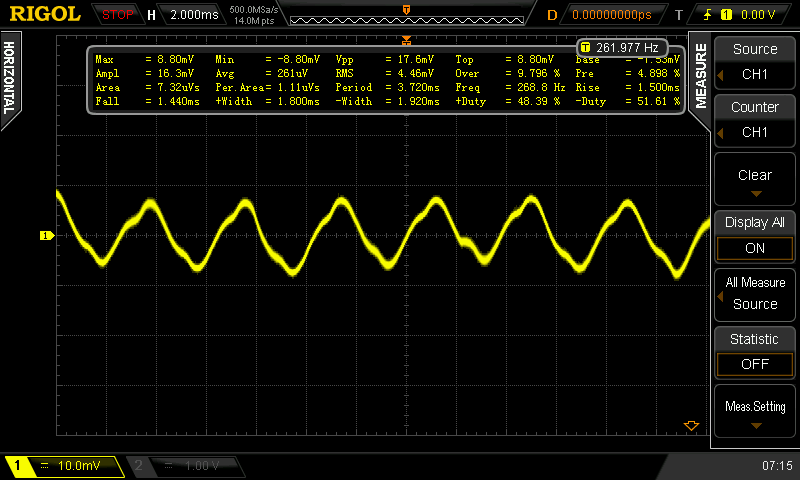
Figure 3: The fundamental frequency of oscillation of Coil 1
According to the result in Figure 3, Coil 1 generated a 262Hz alternating magnetic field.
2. The charging frequency for Coil 2
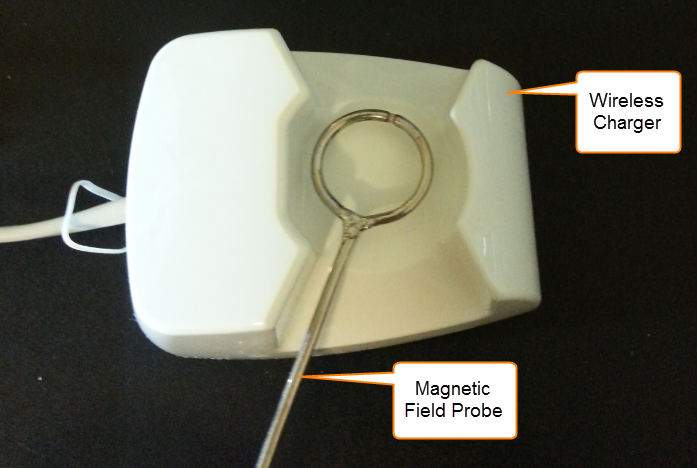
Figure 4: Charging frequency measurement
The Magnetic Field Probe was chosen for this measurement. The ring of the probe was put right above the wireless charger as Figure 4. Measured charging frequency is shown in the Figure 5.
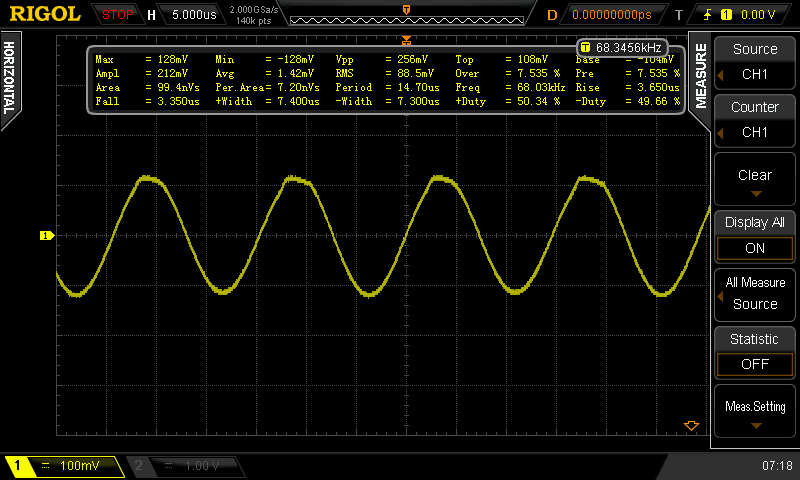
Figure 5: Charging frequency result
According to the result in Figure 5, the wireless charger was continually generating a 68.34 kHz alternating magnetic field.
Part III: Conclusion
Philips Sonicare Electric Toothbrush is designed to brush the teeth 262 times per second, which means the teeth were supposed to be brushed 31440 times in exactly 2 minutes. This toothbrush is definitely more efficient than human hand.
However, the wireless charger design is still not perfect, because it is continually generating a 68.34 kHz alternating magnetic field which is considered not power efficiency. Comparing with the Qi Wireless Charging Standard [2], Qi Charger is better for power efficiency since it will not continually generating an alternating magnetic field when there is no receiver on the charging pad or the receiver is fully charged. Hope Philips will improve the wireless charger design in future.
Part IV: References
[1] Neil(Bing) Hao. Near Field Probe Set. Retrieved January 25, 2014, from https://www.uniteng.com/neildocs/facilities/Near_Field_Probe_Set.pdf
[2] Qi Wireless Charging Standard. Retrieved January 25, 2014, from http://www.radio-electronics.com/info/power-management/wireless-inductive-battery-charging/qi-wireless-charging-standard.php
[3] Neil(Bing) Hao. Measuring EMI with Homemade Magnetic Field Probe. Retrieved January 25, 2014, from https://www.uniteng.com/index.php/2013/05/30/measuring-emi-with-homemade-magnetic-field-probe/
